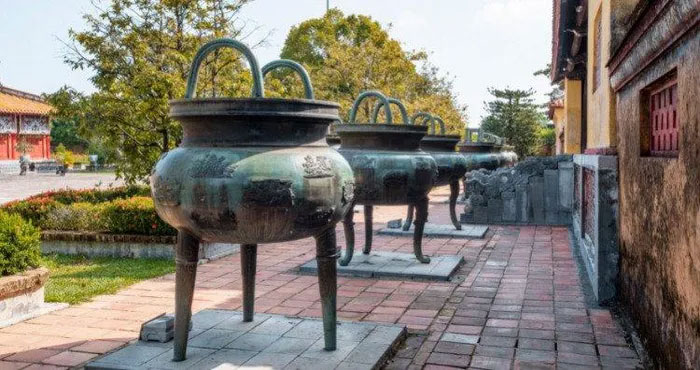Since ancient times, the mysterious lands of China have recorded numerous enigmas with captivating stories. Some remarkable examples include the assassinations of historical figures, sudden disappearances, and discoveries at vast archaeological sites, all surrounded by mysteries that may never be solved.
Top 5 Unsolved Mysteries in Chinese History
1. The Disappearance of Chinese Explorer and Biochemist, Peng Jiamu

Peng Jiamu, a renowned scientist from China, mysteriously vanished during an expedition to the Lop Desert in 1980 while searching for water and never returned. Over the years, several human remains have been excavated from the site where the scientist disappeared and subjected to DNA analysis, but none matched his profile.
Peng Jiamu, a biochemist and explorer from the Shanghai Institute of Biochemistry and Cell Biology, is believed to have disappeared during the Lop Nur expedition in 1980 while leading a team of scientists near a nuclear facility in Xinjiang Province. On June 17, he left the camp in search of water, leaving behind a note, and never came back.
Reports of his disappearance and a subsequent large-scale search were covered by Chinese media, but no traces of the scientist were ever found. From 2005 to 2007, several human remains were excavated from the site where Peng vanished and were analyzed, but no conclusions have been drawn indicating that any of those remains belonged to Peng Jiamu.
2. Kanas Lake Monster

Kanas Lake, located in the valley of Altay Province, China, is home to an unknown mysterious creature beneath its waters. Speculation suggests that giant beings swimming in the lake have caused unexplained waves. This enigmatic body of water also changes color with the seasons, further adding to its mystery.
Hidden within dense forests in the Xinjiang region of Northwest China, Kanas Lake conceals an unknown mysterious creature beneath its surface. Legend has it that these mysterious giant beings inhabit the deep waters of the lake and have pulled horses drinking by the shore into the depths.
The first official sighting of this mysterious creature occurred in 1980 and was reported by the Chinese-language newspaper, Guangming Daily. Since then, several people have visited Kanas Lake hoping to catch a glimpse of the monster.
It is rumored that Kanas Lake was formed around 200,000 years ago and holds the remains of Genghis Khan, the emperor of the Mongol Empire. The aquatic monsters here are said to be his guardians. However, 21st-century researchers do not believe such tales.
According to them, the giant creatures could be taimen Hucho or Siberian taimen, a species of salmonid fish. These can grow up to two meters long and may surface from beneath the water, creating waves while chasing smaller fish in the lake.
3. The Mystery of the Longyou Caves

The Longyou Caves in Shiyan Beicun village, China, comprise a complex of 24 artificial caves, covering an area of 300,000 square meters. The underground structure resembles a palace of an ancient king or a military barracks commanded by someone from the Wuyue Dynasty. The true history behind these manually excavated caves remains unexplained to this day.
The Longyou Caves, a complex of 24 artificial caves, were constructed in the Fenghuang Hills of a village in Zhejiang Province, China. They were accidentally discovered in 1992 by local farmers while draining a pond. During the exploration, they found five caves ranging from 18 to 34 meters in size and up to 20 meters high, along with 19 smaller caves.
Initially, the caves were thought to be a natural wonder; however, after research, it was revealed that these are artificial structures, all interconnected by a special water supply and drainage system. Additionally, each cave is strategically positioned to maximize sunlight exposure, reducing pressure on the ceilings and enhancing illumination.
Archaeologists believe the origins of the caves date back over 2,000 years. Due to the scarcity of evidence and potentially debatable hypotheses, the history of these caves remains a mystery.
4. The Unresolved Mystery of the Tomb of Qin Shi Huang

Qin Shi Huang, the first emperor of the Qin Dynasty, constructed his tomb over 39 years, which was discovered in 1974. Since its discovery, the tomb has been referred to by many names, such as “the eighth wonder of the world” and “one of the largest royal tombs in the world.” Although archaeological investigations confirm excessive mercury levels and the Terracotta Army surrounding the emperor’s tomb, the exact contents of the tomb have yet to be revealed.
5. The Nine Tripod Cauldrons

These nine cauldrons are made from bronze from nine provinces of China and weigh between 6,000 and 8,000 kg.
They are considered symbols of power and were passed down from one ruling dynasty to another for over 1,800 years. When the Qin Dynasty conquered the Zhou, these nine cauldrons mysteriously disappeared without a trace. Reports indicate that two years after the decline of the Zhou Dynasty, these cauldrons were taken from the Zhou palace and transported to the Qin capital of Xianyang. By the time Qin Shi Huang ruled other states to become the first emperor of China in 221 BC, the nine tripods had been lost. Subsequently, a search for these cauldrons was conducted in the Si River, where they were believed to have been lost during transportation, but ultimately nothing was found.


















































